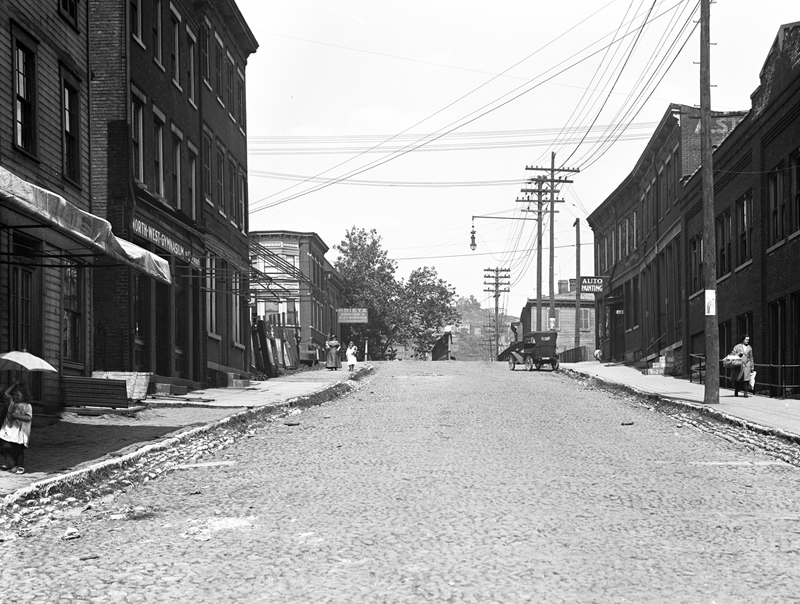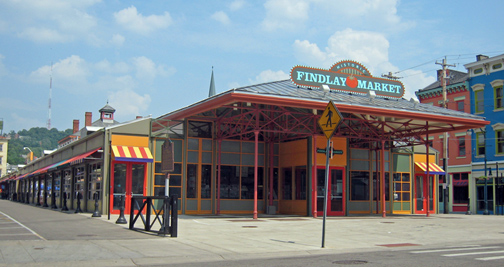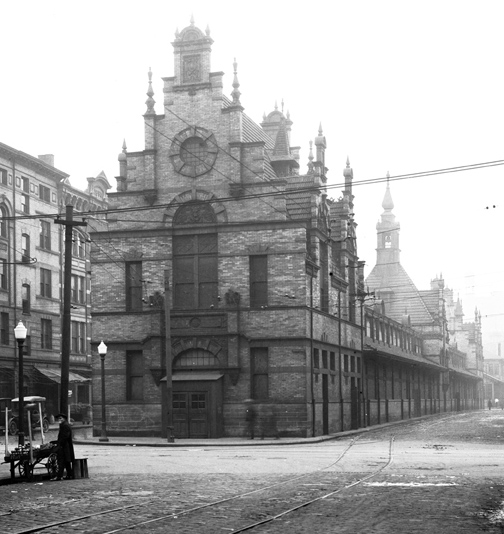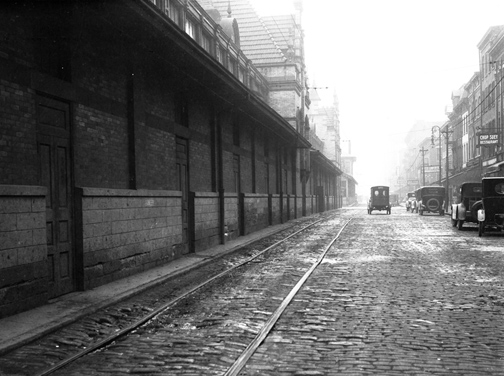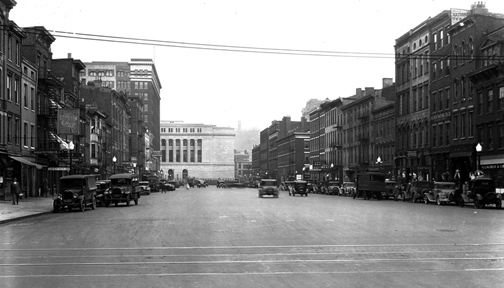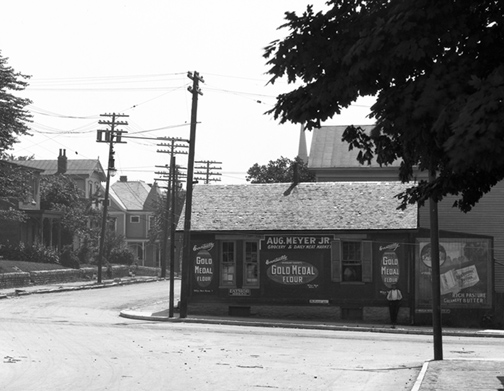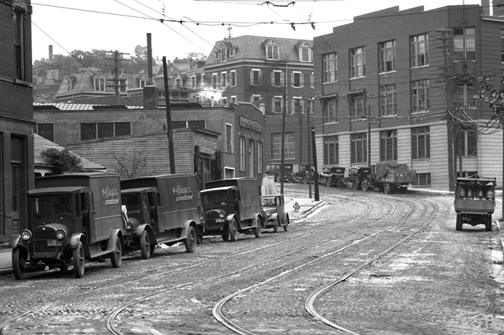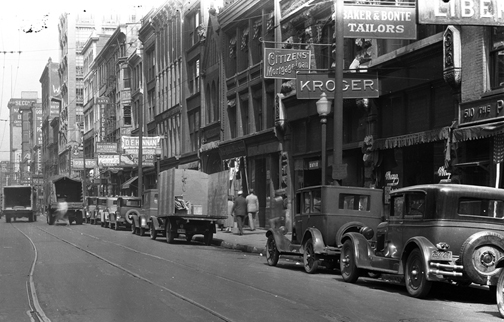By: Angela Vanderbilt
One of the country’s oldest surviving public market houses to operate on a continual basis, Findlay Market is one of the nine original municipal markets that were open for business in downtown Cincinnati at the turn of the 20th century. The major source of goods for Cincinnati’s densely populated urban center, these markets began operating in the early 1800’s and continued to provide fresh produce and other goods to local residents through the mid-1960s, with Findlay Market being the sole survivor in the downtown area.
In addition to Findlay Market (1855-present) located on Elder Street between Elm and Race Streets, the other markets that were open and serving downtown residents when subway construction started in 1920 included the Jabez Elliott Flower Market (1890-1950) and the Sixth Street Market (1895-1960), two markets that extended along Sixth Street between Central Avenue and Elm Streets. Also, Pearl Street Market (1901-1934) located on Market Street between Sycamore and Broadway Streets, an area that had been the site of a public market since 1804, and the Farmers Wholesale Market along Court Street, where livestock and other trading took place from the early 19th century until 1926 when it had grown so large (and unsanitary) that it was forced to move out of the downtown area.
Other markets that were located in the vicinity but were closed before the subway project began were the Fifth Street Market (1829-1870) between Vine and Walnut Streets, Wade Street Market (1848-1898) at the corner of Wade Street and Bauer Avenue, Canal Market (1829-1864) on Court Street between Vine and Walnut Streets, and Court Street Market (1864-1912) built to replace Canal Market on the same site.
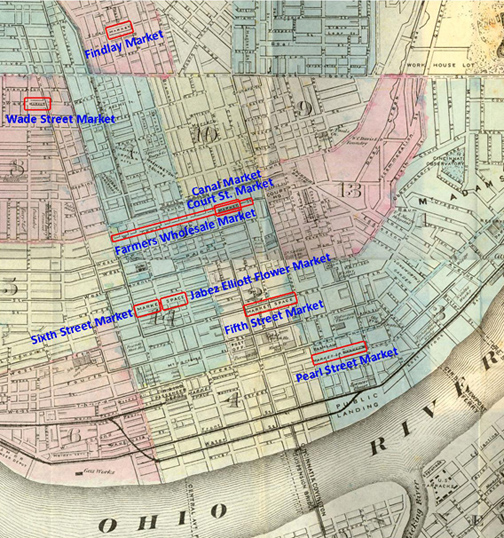
The two large markets that occupied the area between Central Avenue and Elm Street were the Sixth Street Market, which extended from Plum Street to Central Avenue and sold meat and dairy products, and the Jabez Elliott Flower Market, which extended from Plum to Elm Street. The flower market was built in 1890 through a donation to the city from Mary E. Holroyd. The indoor market sold only flowers and held floral shows conducted by the Cincinnati Florists’ Society who met on-site. The market closed in 1950 and was demolished to provide space for a parking lot. The meat and dairy market, also known as the Western Market, was built in 1895 and provided space for 64 butchers and dairymen. In 1960, the market was demolished when the Mill Creek Freeway, now I-75, construction began. Hundreds of West End district residents and merchants were displaced when construction of the freeway interchange began. The area where the markets stood is now home to the Duke Energy Convention Center.
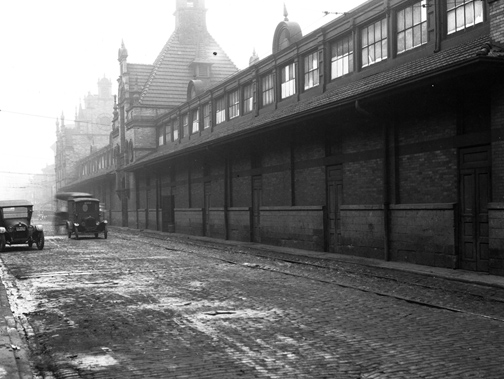
Jabez Elliott Flower Market, view looking west along Sixth Street from Plum Street, December 12, 1923
These public markets provided fresh produce, meats and fish to local residents. Perishable foods were purchased on a daily basis in the late 1800s and early 1900s, when a small ice box served as the only, if any, means of refrigeration in the home. All markets were located within close proximity to Canal Street, and farmers utilized the Miami & Erie Canal to ship their produce and goods to the markets.
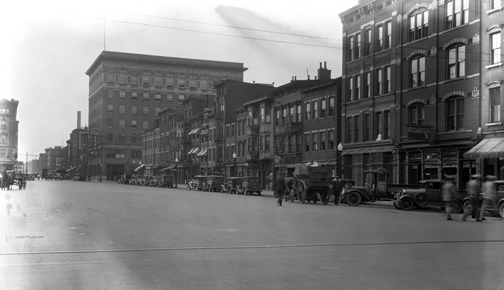
Former location of Farmers Wholesale Market, Canal Market and Court Street Market, view looking west along Court Street from Walnut Street, October 3, 1929
As the city’s street cars and inclined railways developed and allowed residents to escape the crowded urban center for neighborhoods further from the downtown, these bustling markets began to decline as neighborhood shops sprang up. Wagons and the automobile easily delivered goods to the neighborhood shops, adding to the decline and stagnation of the canal.
In the early 1900s, Cincinnatians became more mobile and were able to cover farther distances in shorter amounts of time. Increased automobile ownership and extended reach of trolleys and interurban rails – as well as the proposed route of the subway – allowed people to shop at multiple markets for specific goods as merchants began to specialize in specific items, instead of one-stop-shopping for all. The increased availability of refrigeration in the home allowed shoppers to store perishable foods longer, reducing the daily shopping that the public markets previously relied upon.
Some merchants who got their start in the public markets of the downtown basin realized the convenience to the consumer of containing a variety of goods under one roof, and expanded their store offerings to provide multiple goods and services. Many also realized the economic advantage to their bottom line by providing multiple neighborhood markets, instead of just the one centralized location, as well as delivering customer orders to their homes.
Barney Kroger was one such Cincinnati merchant who, in 1883, recognized this opportunity and who expanded his grocery business into the greater Cincinnati community by offering multiple shop locations that provided a variety of high quality goods to consumers. He utilized the Ford Model T to make home deliveries instead of horse & wagon, and he began developing and manufacturing his own products, instead of buying all of his goods from other wholesalers. The success and growth of The Kroger Grocery and Baking Company would continue to expand over the next 120 years, and today The Kroger Company is the largest grocery store chain and the second largest retail company in the United States, with stores located in 31 states. Not bad for the son of a merchant who opened his first store with just $372!
Sources:
http://www.findlaymarket.org/market-history/
http://www.thekrogerco.com/about-kroger/history-of-kroger
 This project is funded by a grant for $60,669 through the Library Services and Technology Act, administered by the State Library of Ohio.
This project is funded by a grant for $60,669 through the Library Services and Technology Act, administered by the State Library of Ohio.

